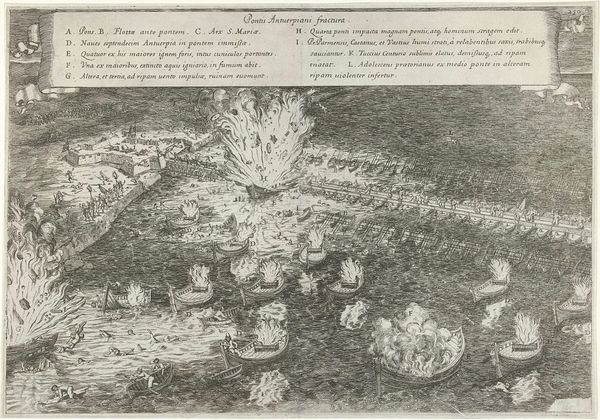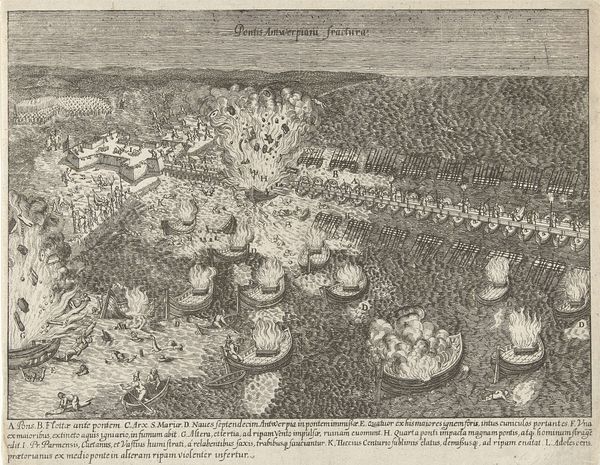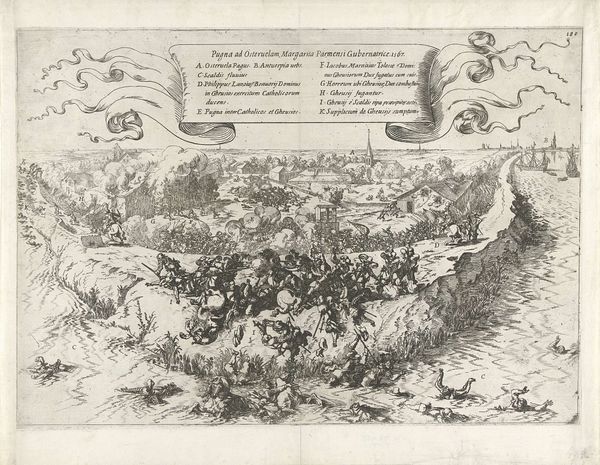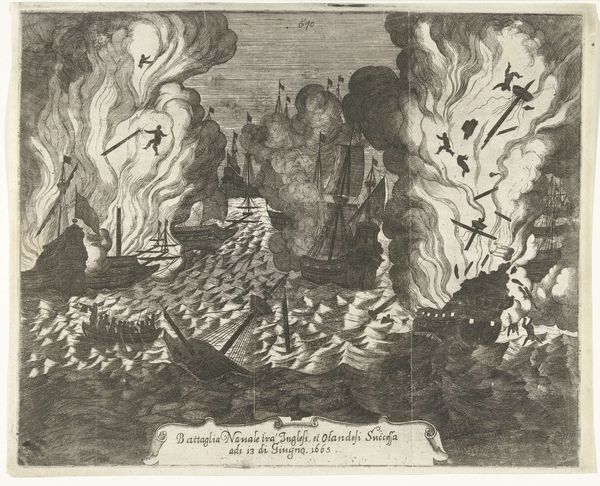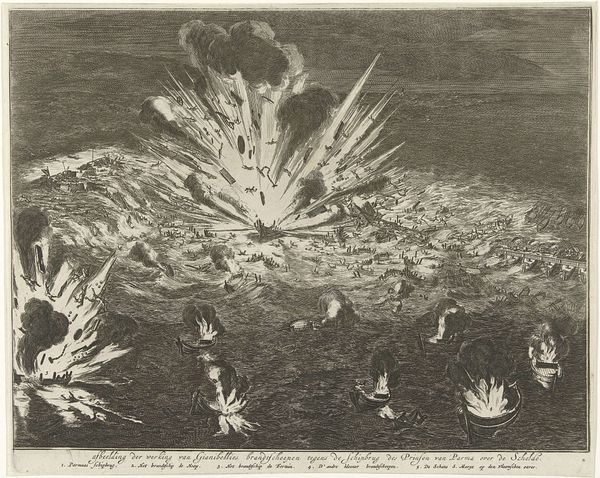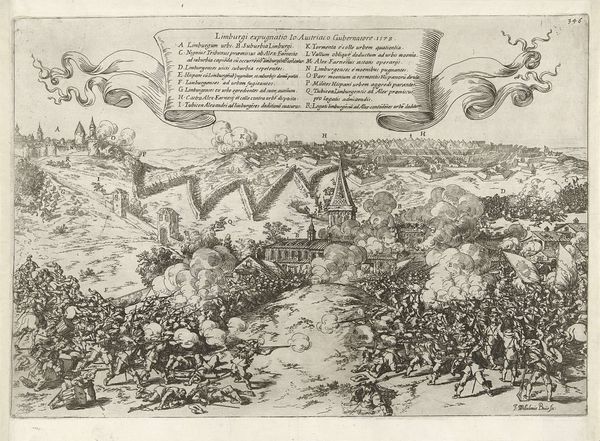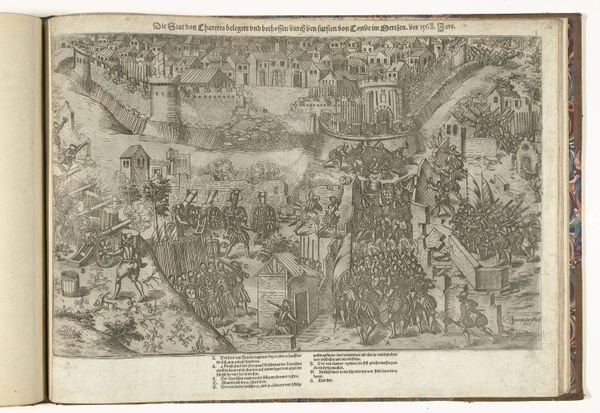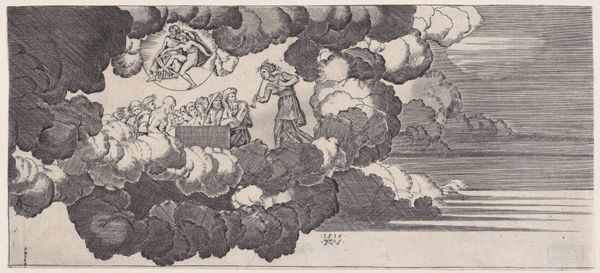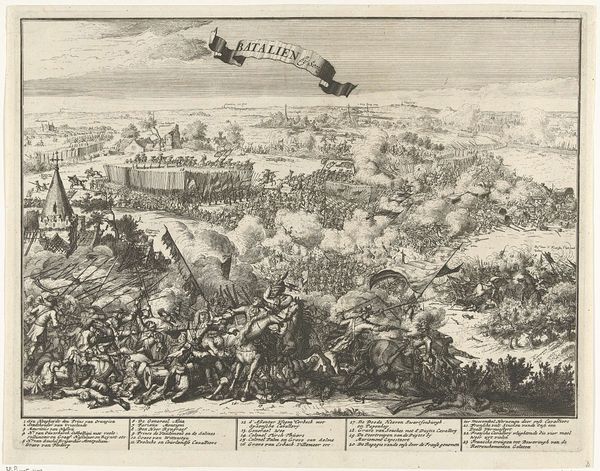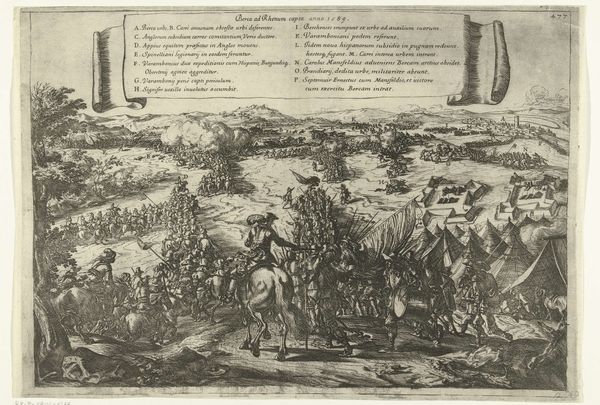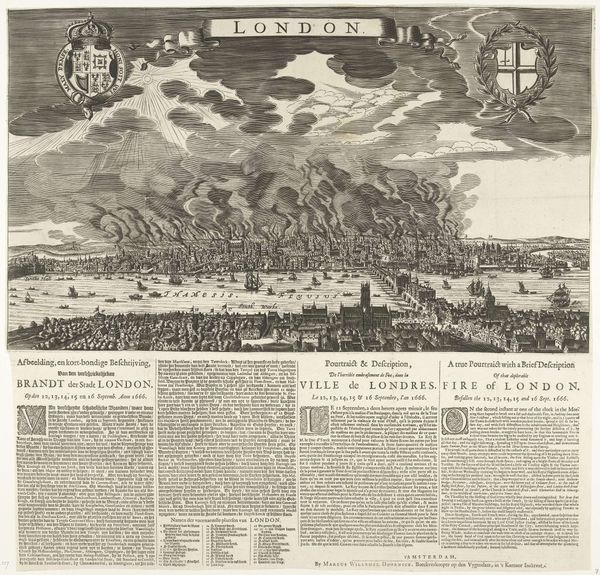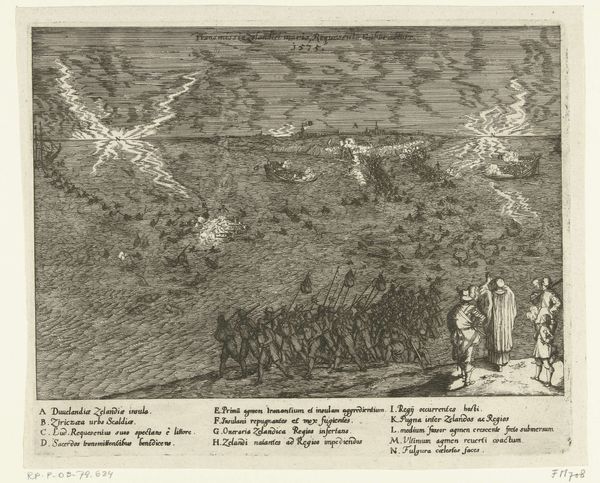
print, etching, engraving
#
narrative-art
#
baroque
#
pen drawing
# print
#
etching
#
line
#
cityscape
#
history-painting
#
engraving
Dimensions: height 273 mm, width 353 mm
Copyright: Rijks Museum: Open Domain
Curator: This compelling print by Coenraet Decker depicts “The Explosion of the Ship Bridge on the Scheldt, 1585.” Dating from the late 17th or early 18th century, it's a detailed etching showcasing a pivotal moment in the Siege of Antwerp. What's your immediate reaction? Editor: The overwhelming chaos! It's a scene of complete destruction; the ships ablaze, the bridge ruptured, figures flailing in the water... It’s a powerful image, though quite graphic. The materials, this painstaking printmaking—seems a sharp contrast to the destructive event itself. Curator: Precisely. Decker renders violence with meticulous line work, drawing attention to the socio-political turmoil. This image encapsulates the religious conflicts and power struggles during the Eighty Years' War. We see this event mirrored through a baroque lens, emphasizing grand historical narratives. Editor: It makes me consider the labor behind the piece – the making of the print itself. How the tools, inks, and paper—and of course, Decker’s skill — are complicit in presenting a specific version of events, particularly considering that the print was created nearly a century after the event! What was the context of its production and consumption? Curator: Excellent question! Prints like this were vital tools for disseminating information, albeit biased, of significant events. They were reproduced and widely circulated. Analyzing it now, it becomes clear the ways this image can speak to cultural anxieties about power, resistance, and perhaps even the trauma of warfare. The victims are almost abstracted by the detail. Editor: I'm particularly struck by the artist's process and his raw materials – how etching captures something of the real violence while creating commodity for the burgeoning print market. It provokes a further look into labor involved in creating such pieces. Who were the printers? How were these prints distributed, sold, and used to spread ideology? Curator: These questions are vital to understanding the complexities inherent in this piece and the narratives it perpetuates. Understanding that art doesn't exist in a vacuum is so important. It's influenced, intentional, and tells stories both overt and subtle. Editor: Absolutely. Appreciating not just the "what," but the "how" and "why" it came into being sheds light on history as it unfolded. Curator: Exactly! Thanks for exploring with me. Editor: Likewise! These explorations always expand our understanding, materially and beyond.
Comments
No comments
Be the first to comment and join the conversation on the ultimate creative platform.
